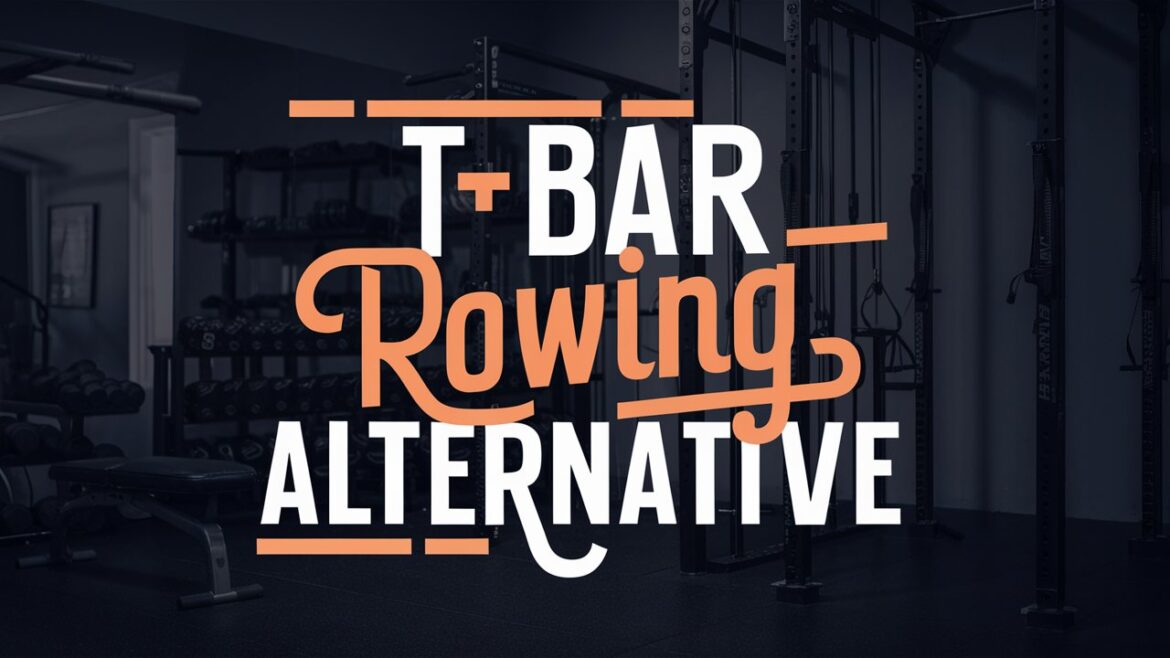Read Quick Answer
One can do plenty of other exercises effectively that exercise the same muscle group as the T-bar row. Probably the best of these alternates are bent-over rows, single-arm dumbbell rows, seated cable rows, and landmine rows. All these workouts pattern a strong back, working out lats, rhomboids, and traps.
Introduction
The following T-bar row is one of the main exercises in case people want a real powerful and muscular back; not everybody has access to that kind of equipment.Fortunately, there are many alternatives that can replace it pretty well.
This blog is going to talk about various T-bar row alternatives and their pros, together with how to perform them Correctly.
Understanding The T-Bar Row
The T-bar rowing is a compound movement exercises on the latissimus dorsi, rhomboids, and the trapezius muscles.
It involves the motion of pulling a barbell with weights loaded at one end while the other is anchored to the floor. It builds upper body strength and enhances good posture.
Good Alternatives for The T-Bar Row
Bent-over Barbell Row
The bent-over barbell rowing is some old school, full-body movement exercise that really brings explosions out of the back muscles.
Target Muscles:
- Latissimus dorsi, rhomboids, traps, rear deltoids, biceps.
How to perform:
- Stand with feet spaced widely and allow the hip hinge.
- Grip a barbell overhand with both hands.
- Maintain the back as straight, row the barbell to the lower ribcage.
- Return the barbell to the starting position with control for the eccentric lowering.
Single-Arm Dumbbell Row
This is a single arm to correct muscle imbalances on either side.
Target Muscles:
- Latissimus dorsi, rhomboids, traps, rear deltoids.
How to perform:
- Supporting one knee and one hand on a bench, grab a dumbbell with the other hand.
- With a straight back and engaged core, pull the dumbbell to your hips-remember as much activation into your lats here.
- Lower the dumbbell down, then perform on the other side.
Seated Cable Row
The seated cable rows put continuous tension on the back muscles throughout the movement.
Target Muscles:
- Lats, rhomboids, traps, biceps.
How to Perform:
- Sit at a cable row machine and place your feet securely on the footrests.
- Now, grab the cable attachment with a neutral grip.
- Next, pull it toward your abdomen without bending your back.
- Now, slowly allow the weight to return to the original position.
Landmine Row
Landmine rows are a variation of the exercise that can be done in multiple grips and positions.
Target Muscles:
- Lats, rhomboids, rear deltoids, biceps.
How to Perform:
- Place one end of a barbell inside a landmine attachment or in a corner.
- Stand facing the weighted end of the barbell.
- Grasp the barbell and pull it towards your torso.
- Lower it back down with control.
Inverted Row
Inverted rows are a fine alternative bodyweight exercise targeting the upper back.
Target Muscles :
- Lats, rhomboids, traps, rear deltoids, biceps, core
How to Perform:
- Set a bar at hip height or set up suspension straps.
- Position yourself under the set-up and grab the bar with an overhand grip.
- Pull your chest towards the bar and keep your body straight.
- Lower yourself back down with control.
Comparing Different Alternatives
Muscle Engagement
Bent-Over Barbell Row:
The exercise has broad muscle variety and engages the low back area.
Single-Arm Dumbbell Row:
unilateral muscle development
Seated Cable Row:
That would provide continuous tension and strongly isolate the upper back.
Landmine Row:
It works flexibly; you can do a lot of different grips and positions as per your desire.
Inverted Row:
Good core engagement, good strength in the upper back.
Equipment and Accessibility
Bent-Over Barbell Row:
Barbell and weights are needed for exercise performance.
Single-Arm Dumbbell Row :
This exercise requires dumbbells and a bench.
Seated Cable Row:
It requires a cable machine.
Landmine Row:
This exercise requires a barbell along with a landmine attachment or corner to perform it.
Inverted Row:
Equipment required is a bar or suspension straps.
Frequently Asked Questions
What muscles are activated through T-bar row alternatives?
Bilaterals: lats, rhomboids, traps, rear deltoids, and biceps.
Can I do these at home?
Yes, most of those, like single-arm dumbbell rows and inverted rows, require minimal equipment at all and can easily be done from home.
How often should I do these?
You can do these exercises 2-3 times a week as part of your back workout routine for the best results.
Which one is the best exercise to start with?
As a beginner, the exercises to start with are the seated cable row and the single-arm dumbbell row because of the controlled motion and feasible usage. Yes, you can do all exercises of this nature in one workout for overall exercise for the back.
Conclusion
T-bar row alternatives in your workout routine are instrumental in developing a strong and muscular back. Each exercise has some benefits unique to itself and can be easily done according to one’s needs and equipment available.
Knowing these alternatives and doing them accordingly is something that would very diligently drive you toward your ultimate servicing of fitness goals, building up overall strength.

